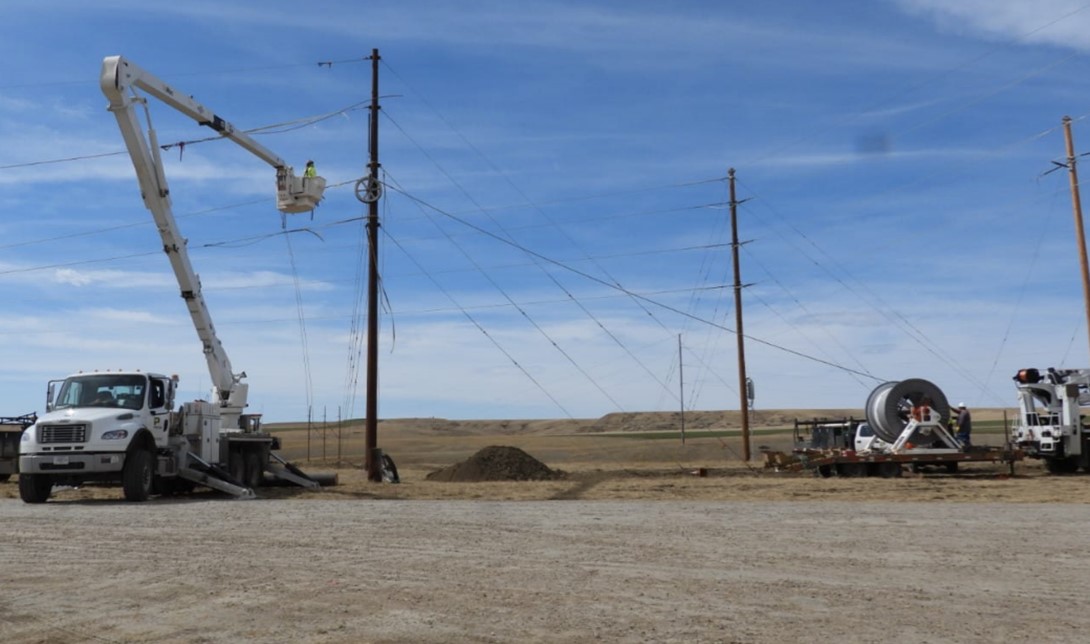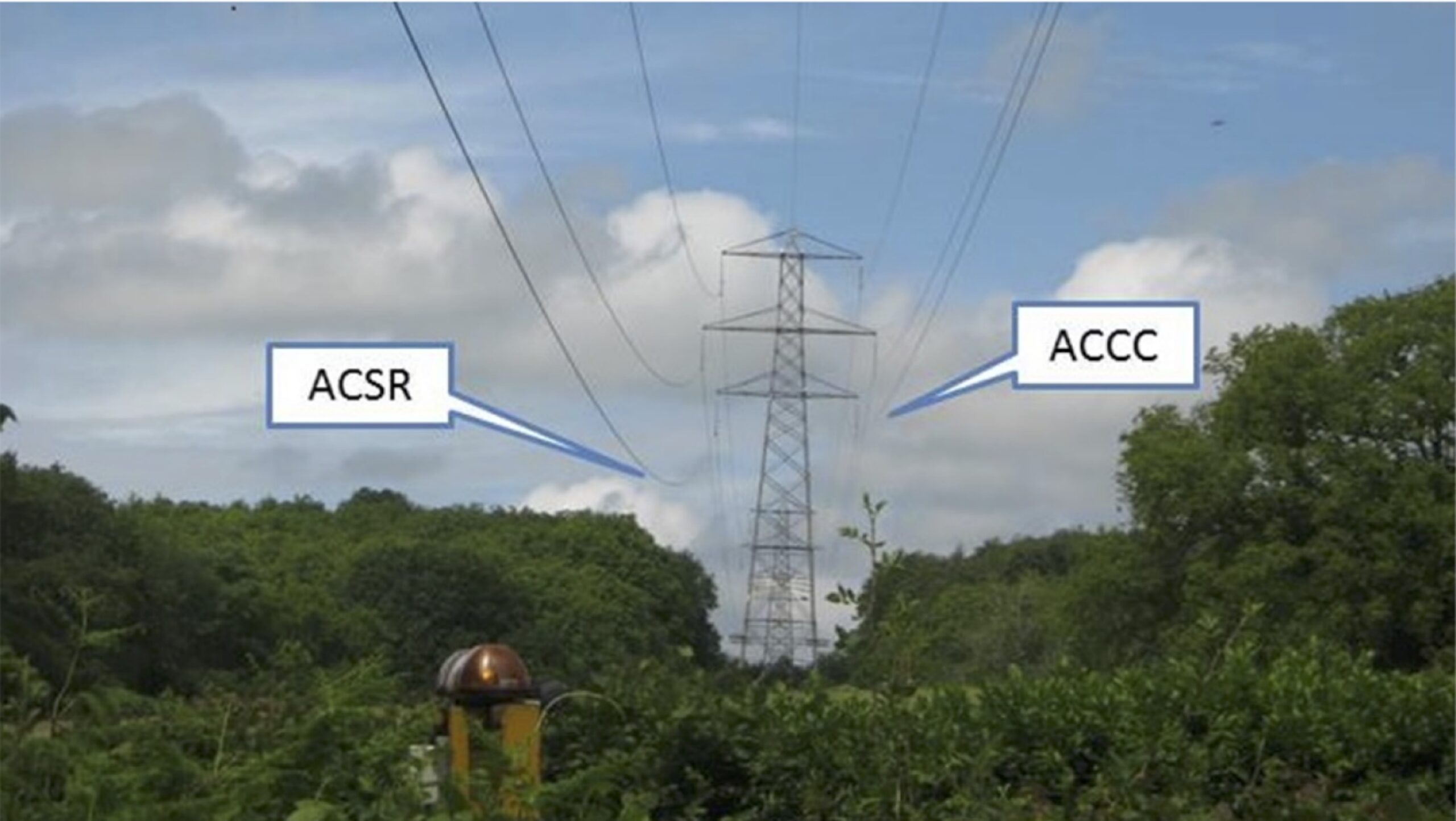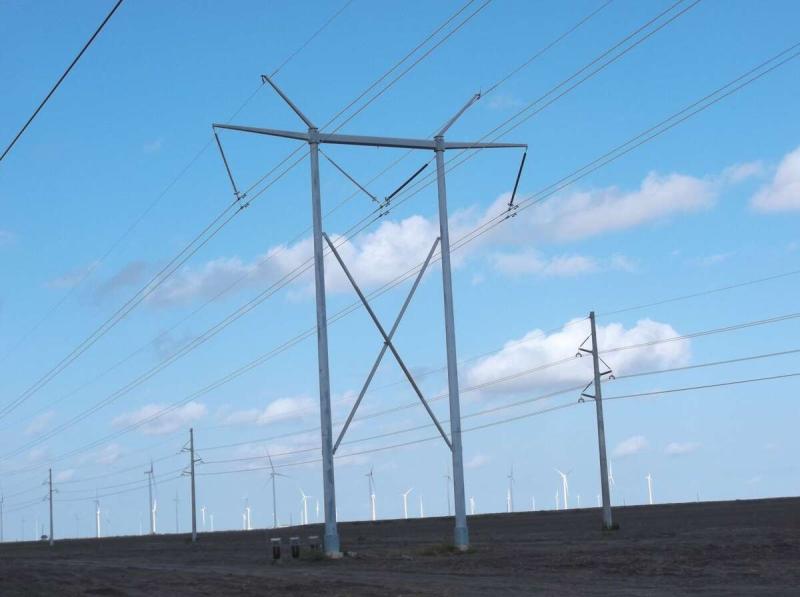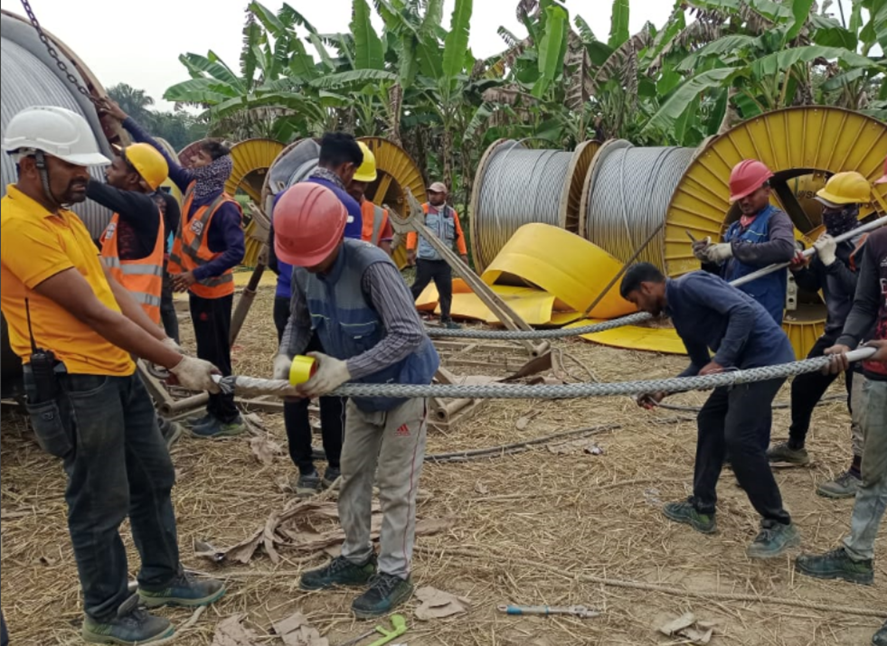Executive Summary: The results of nearly two decades of intensive mechanical, physical, chemical, electrical, and hardware testing confirm that the longevity of the carbon fiber composite core ACCC® Conductor will greatly exceed the longevity of conventional steel core ACSR/ACSS aluminum conductors in extremely harsh, demanding, and highly corrosive environments. Successful ACCC Conductor testing emphasizes why hybrid carbon fiber composite materials have been highly successful in aerospace, automotive and other industrial applications dating back to the early 1980’s.
Background: As is true in other highly demanding applications, bare overhead conductors are subject to extreme thermal, mechanical, chemical, and environmental stresses that can impact a product’s performance, service life, reliability, and longevity.
CTC Global Corporation, the inventor of the ACCC Conductor, selected carbon fiber technology as the basis for the ACCC® Conductor’s composite core for several reasons:
• Carbon fiber is seven times stronger than steel on a per weight basis;
• Carbon fiber does not plastically deform, creep, or yield;
• The coefficient of thermal expansion of carbon fiber is ten times lower than steel;
• Carbon fiber is highly resistant to cyclic load fatigue;
• Carbon fiber is impervious to corrosion.
To further improve the flexibility, toughness, and corrosion resistance of the ACCC Conductor’s carbon fiber composite core, CTC Global added an integrated outer layer of high-grade, boron-free glass fibers. To date, this technology has been installed by more than 250 utilities at over 1,250 projects in 65+ countries in every imaginable environmental condition, with great success.
Longevity Testing: While dozens of tests are performed each day on the ACCC Conductor’s composite core (and constituent materials) as part of the Company’s extensive ISO 9001 quality assurance program, and additional tests are performed in CTC Global’s ISO/IEC 17025 Certified Laboratory as part of the Company’s ongoing R&D program, longevity tests have been ongoing since the product’s introduction in 2003.
Longevity tests that often use accelerated test protocols, field measurement, and computer modeling are designed to assess the impact of various stressors over the product’s anticipated service life of 40, 50, 60 or more years. These tests scrutinize various properties that can change over time with operating and environmental stresses. These tests include: Tensile; Flexural; Shear; High Frequency Vibration; Low Frequency Galloping; Thermal Aging; Torsion; Bending; and a number of other highly specific tests which generally follow ASTM, IEEE, IEC or other recognized test standards and test protocols. Examples of these tests are listed in the table below.
Hardware Testing: As with all bare overhead conductors, hardware components such as dead-ends and splices are critical to conductor performance and longevity. CTC Global developed, tested, and has since deployed nearly one million dead-end and splice connectors without a single reported failure. The unique ACCC Hardware design uses a collet device which grips the composite core more effectively than conventional compression hardware.
Computer Modeling: Between 2005 and 2008, the Alpha Star Corporation, hired by CTC Global, performed Finite Element Analysis (FEA) computer modeling, to estimate the expected lifetime of the ACCC Conductor based upon anticipated fluctuations in temperature and conductor tension. The FEA analysis shows that daily excursions up to the maximum continuous operating temperature of 180°C at an initial conductor tension of 25% of its rated tensile strength, indicated a 50+ year service life.
Manufacturing Standard: In 2014, ASTM (formerly known as the American Society for Testing and Materials), published the “B987 Standard Specification for Carbon Fiber Thermoset Polymer Matrix Composite Core (CFC) for use in Overhead Electrical Conductors.” This standard, now ASTM B987-20, established a series of test protocols to ensure the carbon fiber composite (CFC) core would meet the rigors of the overhead line application and maintain its properties throughout its anticipated 40+ year service life.
One of the most arduous test protocols required for conformance to the ASTM Standard is a 52-week thermal aging test at temperatures above the manufacturer’s rated continuous operating temperature. Testing of the ACCC Conductor’s CFC core has been completed numerous times in CTC Global’s ISO 17025 Certified laboratory, and the results are presented in all of CTC Global’s Design Validation Test Reports – for every core size – as required by ASTM B987. The results confirm that the ACCC Conductor’s CFC core meet all performance and longevity requirements.
Longevity Verification: As the world’s leading manufacturer of CFC cores for bare overhead conductors, CTC Global, in 2022, completed Arrhenius thermal aging testing and analysis. Arrhenius testing and analysis, which follows IEC 60216-1 Arrhenius protocols, performs accelerated thermal aging testing which can be used to analyze the lifetime of CFC cores at their expected maximum continuous operating temperature. The results of testing demonstrated that at 180°C continuous operating temperature for the ACCC Conductor, its CFC core will retain 105% to 115% of its rated tensile strength over its anticipated 40+ year service life. These results corroborated with the ASTM B987 200°C/52-week heat exposure test described earlier.
Independent Validation: Because the ACCC Conductor uses a novel carbon composite core, many utilities, international labs and universities have developed novel test protocols.
American Electric Power Testing: Between 2008 and 2009, American Electric Power (AEP) developed and performed their “Sequential Mechanical Test” wherein they subjected ACSR, ACSS (conventional steel reinforced conductors) and ACCC Conductor to extreme bending under tension to replicate installation stress, followed by 100 thousand cycles of low frequency ‘galloping’ and 100 million cycles of high frequency ‘Aeolian vibration,’ using real connectors and suspension clamps. They then pulled the samples to failure. After these protocols were completed on the ACCC Conductor, they took samples back to their in-house lab at Dolan, Ohio and completed another ~two dozen test protocols on ACCC Core samples. AEP was highly satisfied with the results of its testing which demonstrated that – even after extreme exposures – the stressors had very little impact on the ACCC Conductor’s core integrity. Since then, AEP has successfully installed over 3,700 kilometers of ACCC Conductor at over 20 U.S. projects.
Electric Power Research Institute (EPRI) Testing: EPRI, another well-known industry leader, performed a series of other novel installation and longevity tests for their Utility funders between 2004 and 2017. The primary focus of EPRI’s test protocols was to assess thermal aging of the conductor and conductor hardware. While much was learned configuring various test set ups, thermal and cyclic testing confirmed that the ACCC Core, ACCC Conductor and ACCC Hardware exceeded all thermal operating criteria set out by international standards along with EPRI’s novel 1,500 thermal cycle test. Additionally, as part of EPRI’s High-Temperature, Low-Sag (HTLS) conductor study program (~2003-2017), field measurements at an ACCC Conductor installation confirmed the ACCC Conductor performed as expected.
International Laboratories, Universities and NSF/Denver University: To satisfy entry into other international markets, laboratories in the U.K, France, Canada, Mexico, China, Brazil, Chile, Belgium, Indonesia, and Germany have tested various parameters of the ACCC Conductor and found the results to be comprehensive. Additionally, numerous University students from around the world have also studied and tested various elements of the ACCC Conductor as part of their master and doctorate programs. These studies and tests – mostly focused on composite technology in the application of bare overhead conductors – also confirmed that CTC’s hybrid carbon fiber composite core (and resin matrix) is ideally suited for this application. Some very noteworthy tests, supported by the U.S. National Science Foundation and industry members, and completed by students at Denver University found that even when exposed to extremely acidic, corrosive, and high-temperature conditions, the ACCC Conductor and core outperformed conventional and other novel conductor technologies.
The results of nearly two decades of testing confirm that ACCC® Conductor longevity is expected to exceed the longevity of conventional steel-core, e.g. ACSR/ACSS, aluminum conductors in general transmission and distribution line applications and significantly exceed the longevity of conventional conductors in highly corrosive environments.
For more information, please email [email protected] or visit www.ctcglobal.com





